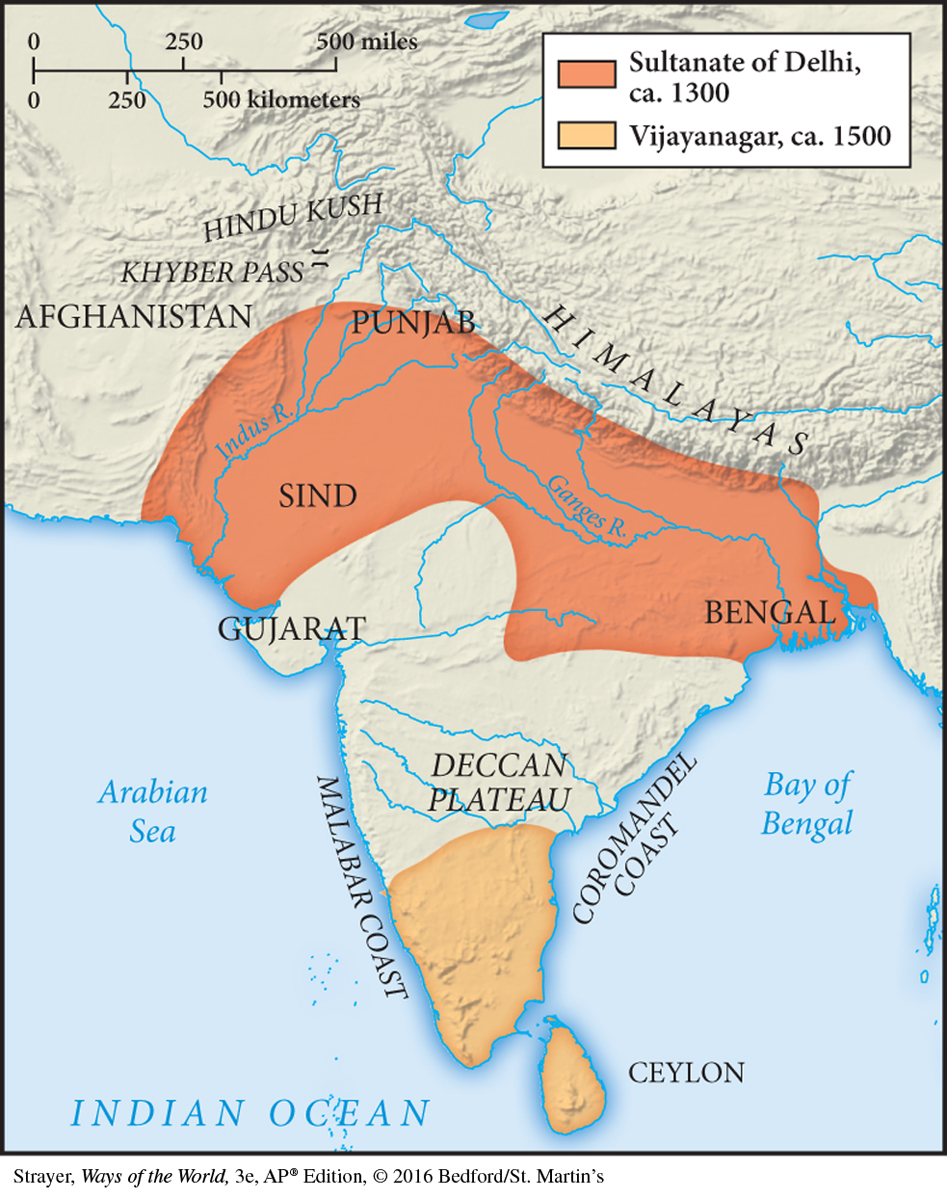The Case of India

In South Asia, Islam found a permanent place in a long-
384
Guided Reading Question
▪COMPARISON
What similarities and differences can you identify in the spread of Islam to India, Anatolia, West Africa, and Spain?
AP® EXAM TIP
Take good notes on the political and cultural features of the Delhi sultanate.
In the centuries that followed, substantial Muslim communities emerged in India, particularly in regions less tightly integrated into the dominant Hindu culture. Disillusioned Buddhists as well as low-caste Hindus and untouchables found the more egalitarian Islam attractive. So did peoples just beginning to make the transition to settled agriculture. Others benefited from converting to Islam by avoiding the tax imposed on non-Muslims. Sufis were particularly important in facilitating conversion, for India had always valued “god-filled men” who were detached from worldly affairs. Sufi holy men, willing to accommodate local gods and religious festivals, helped to develop a “popular Islam” that was not always so sharply distinguished from the more devotional (bhakti) forms of Hinduism.
Unlike the earlier experience of Islam in the Middle East, North Africa, and Persia, where Islam rapidly became the dominant faith, in India it was never able to claim more than 20 to 25 percent of the total population. Furthermore, Muslim communities were especially concentrated in the Punjab and Sind regions of northwestern India and in Bengal to the east. The core regions of Hindu culture in the northern Indian plain were not seriously challenged by the new faith, despite centuries of Muslim rule. One reason perhaps lay in the sharpness of the cultural divide between Islam and Hinduism. Islam was the most radically monotheistic of the world’s religions, forbidding any representation of Allah, while Hinduism was surely among the most prolifically polytheistic, generating endless statues and images of the Divine in many forms. The Muslim notion of the equality of all believers contrasted sharply with the hierarchical assumptions of the caste system. Believing in sexual modesty, Muslims were deeply offended by the open eroticism of some Hindu religious art.
Although such differences may have limited the appeal of Islam in India, they also may have prevented it from being absorbed into the tolerant and inclusive embrace of Hinduism, as so many other religious ideas, practices, and communities had been. The religious exclusivity of Islam, born of its firm monotheistic belief and the idea of a unique revelation, set a boundary that the great sponge of Hinduism could not completely absorb.
AP® EXAM TIP
You should know about interactions between different faiths, such as those discussed here between Hindus and Muslims.
385
Certainly, not all was conflict across that boundary. Many prominent Hindus willingly served in the political and military structures of a Muslim-ruled India. Mystical seekers after the Divine blurred the distinction between Hindu and Muslim, suggesting that God was to be found “neither in temple nor in mosque.” “Look within your heart,” wrote the great fifteenth-century mystic poet Kabir, “for there you will find both [Allah] and Ram [a famous Hindu deity].”20 During the early sixteenth century, a new and distinct religious tradition emerged in India, known as Sikhism (SIHK-iz’m), which blended elements of Islam, such as devotion to one universal God, with Hindu concepts, such as karma and rebirth. “There is no Hindu and no Muslim. All are children of God,” declared Guru Nanak (1469–1539), the founder of Sikhism.
Nonetheless, Muslims usually lived quite separately, remaining a distinctive minority within an ancient Indian civilization, which they now largely governed but which they proved unable to completely transform.